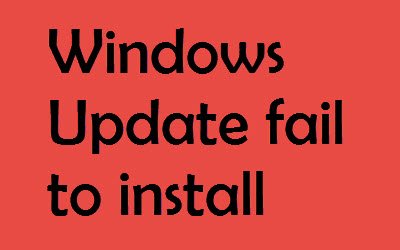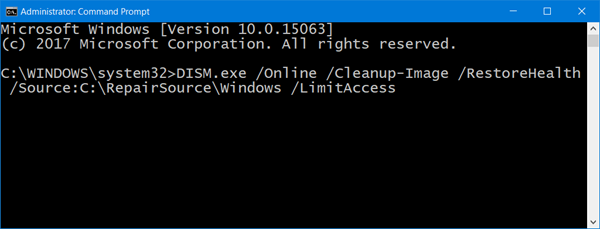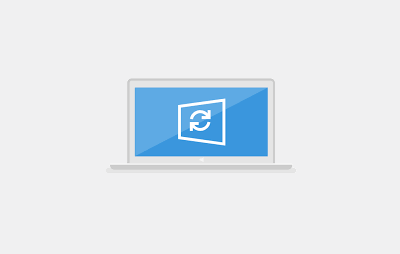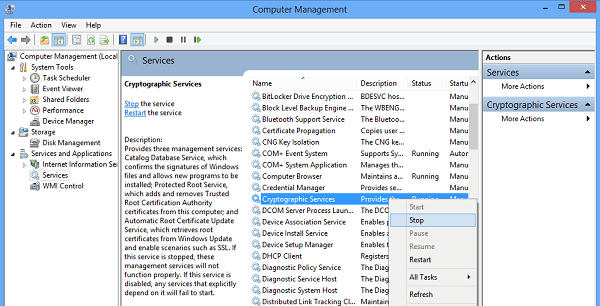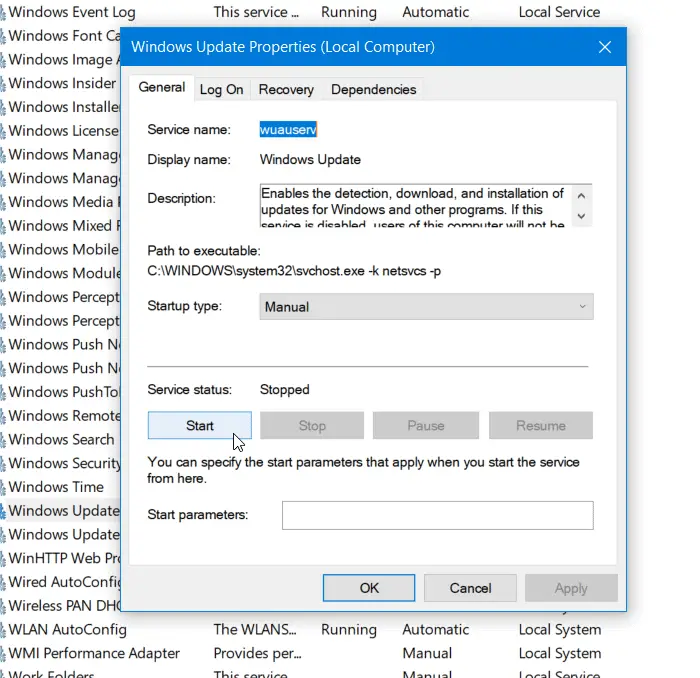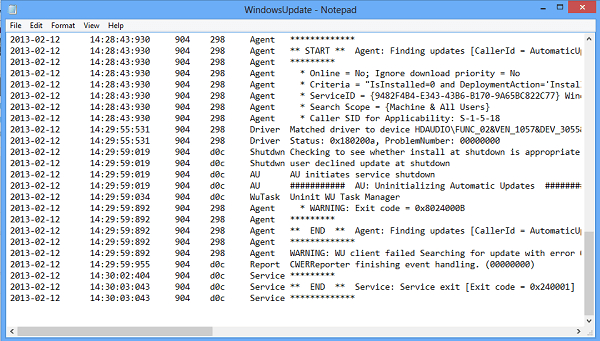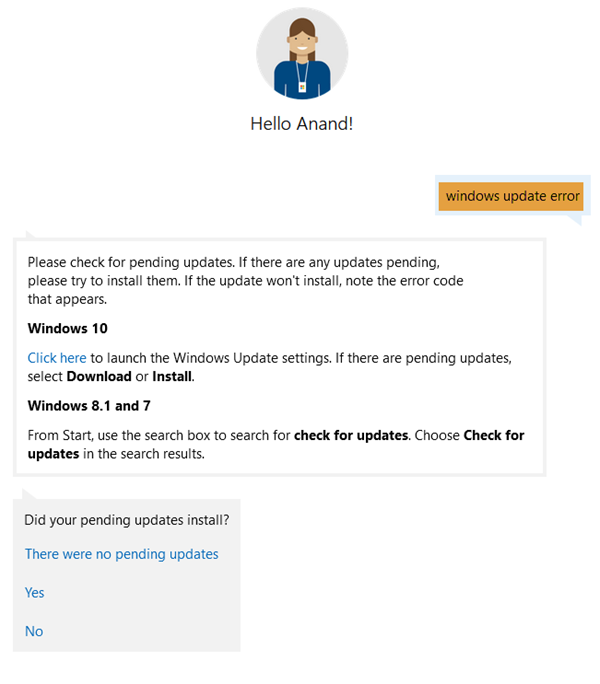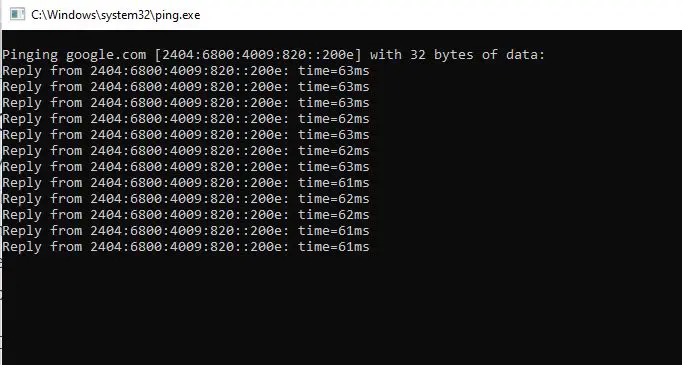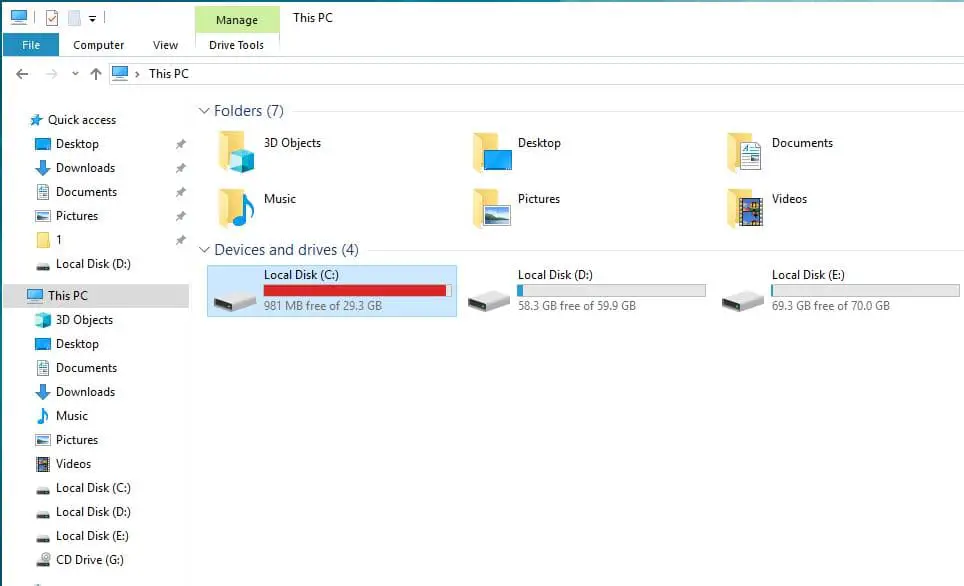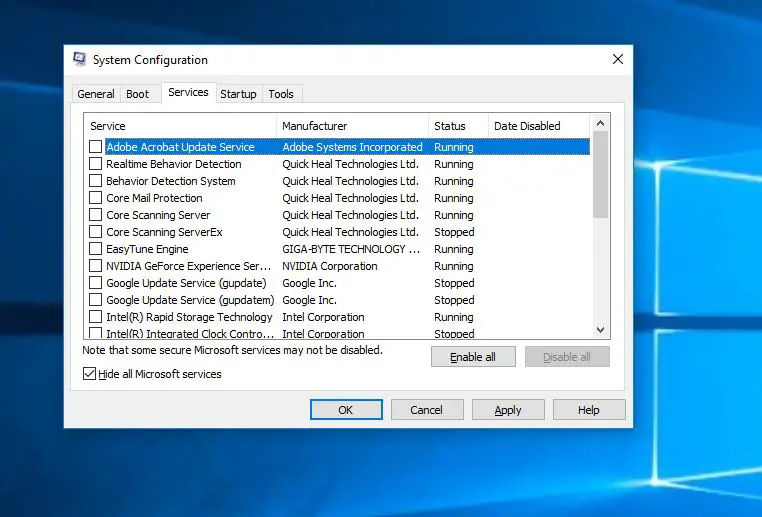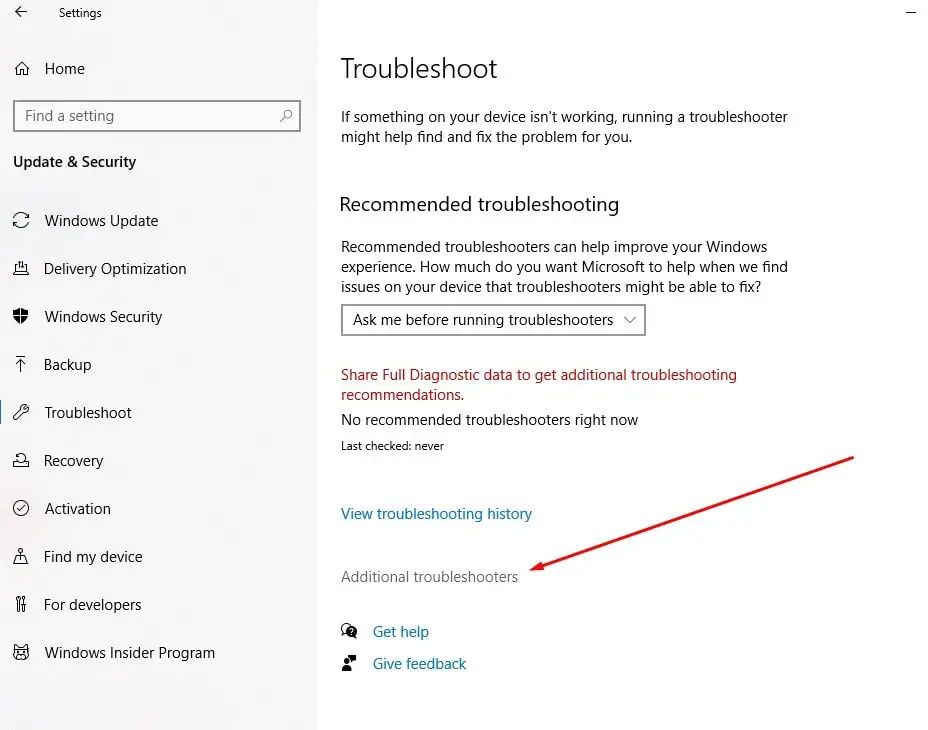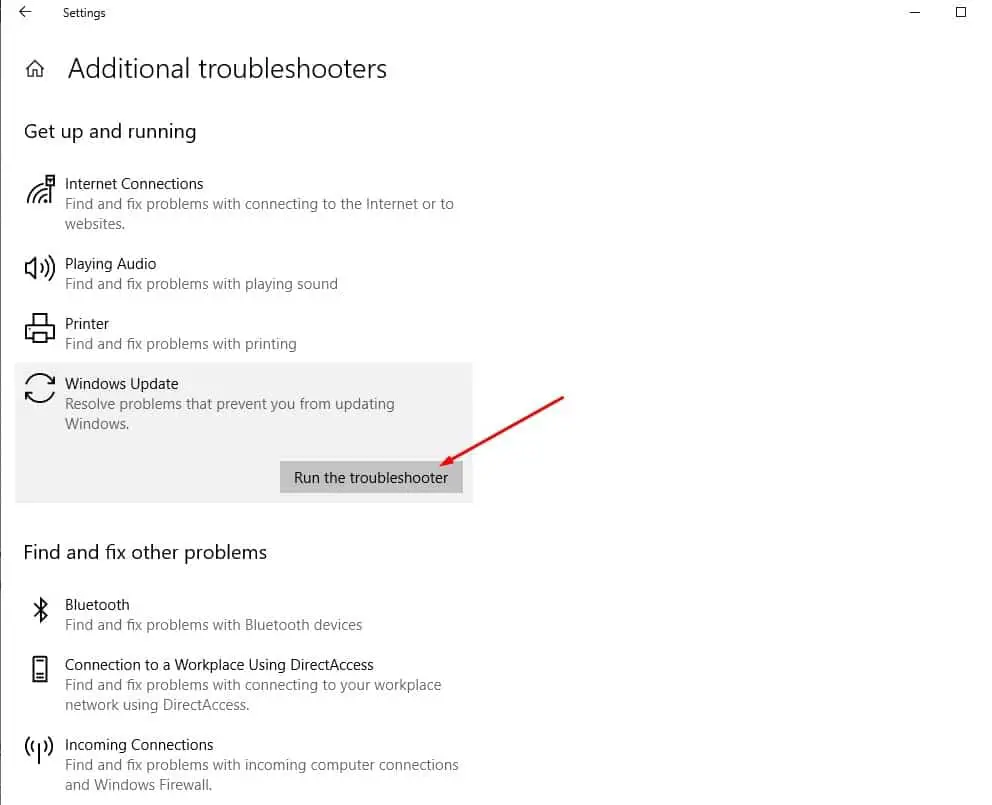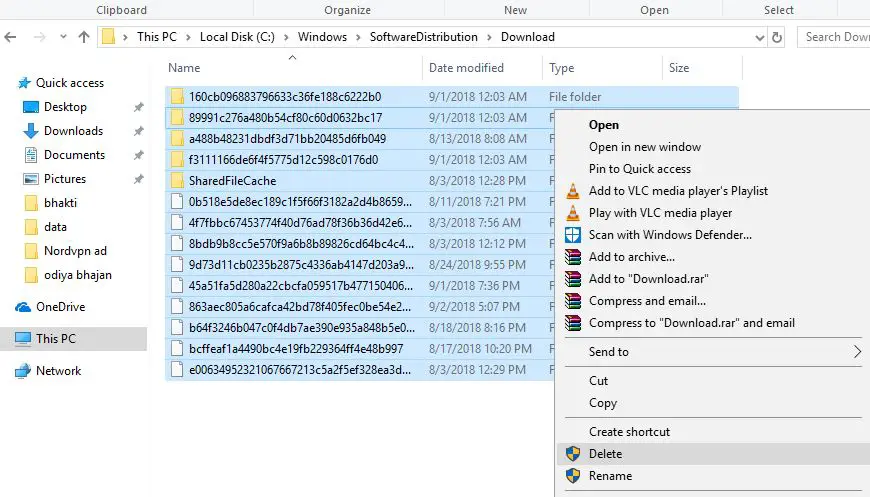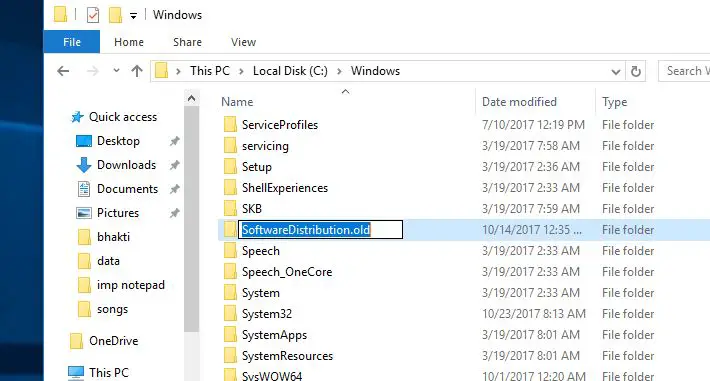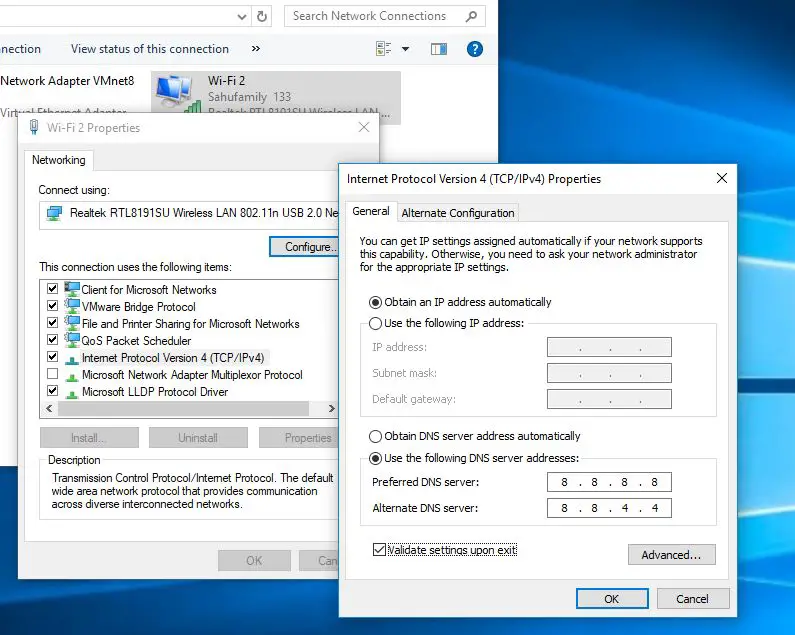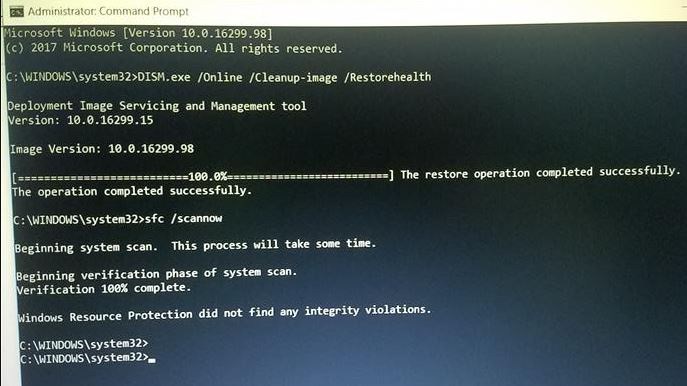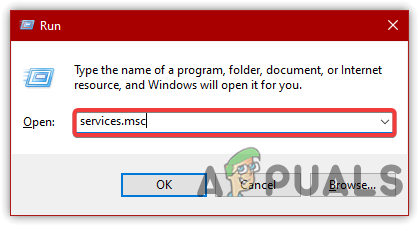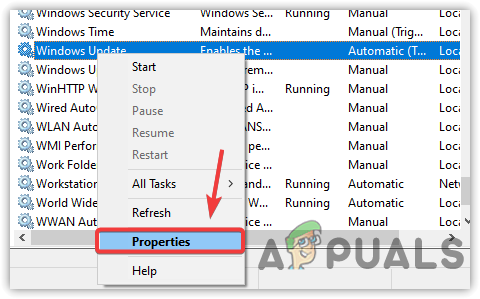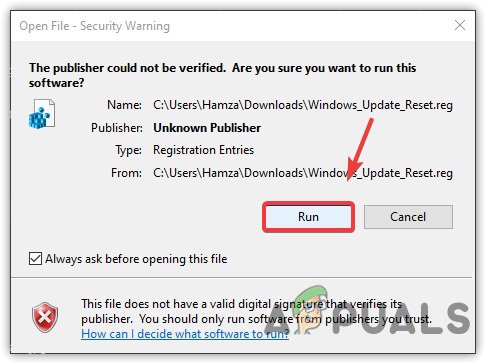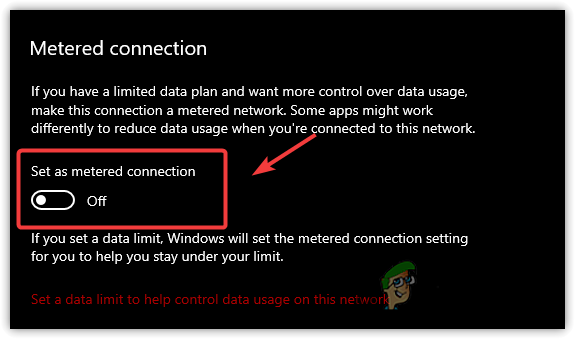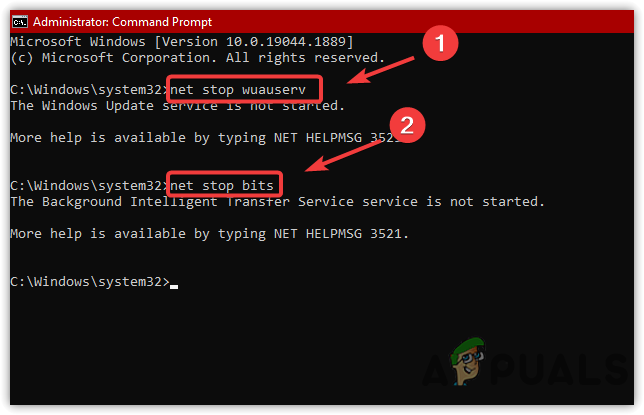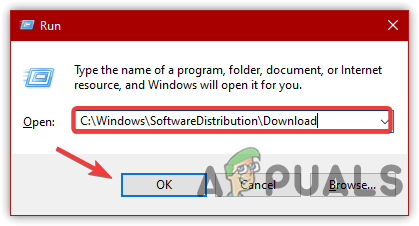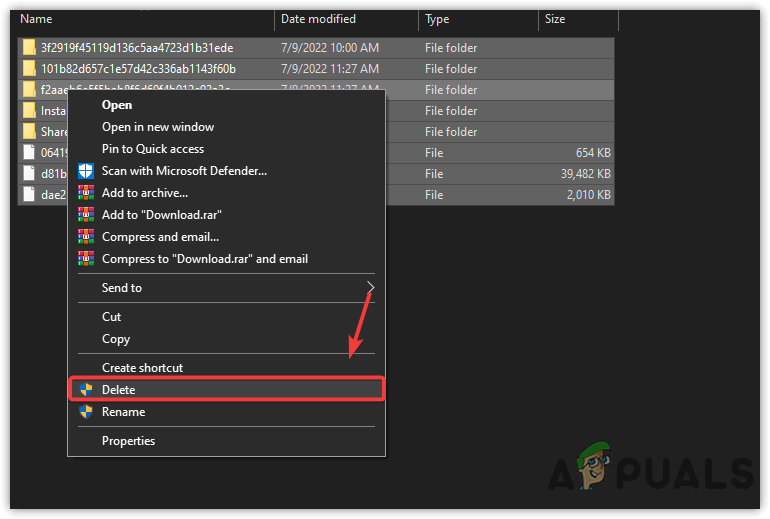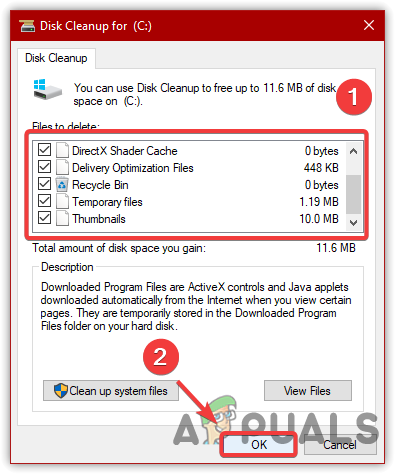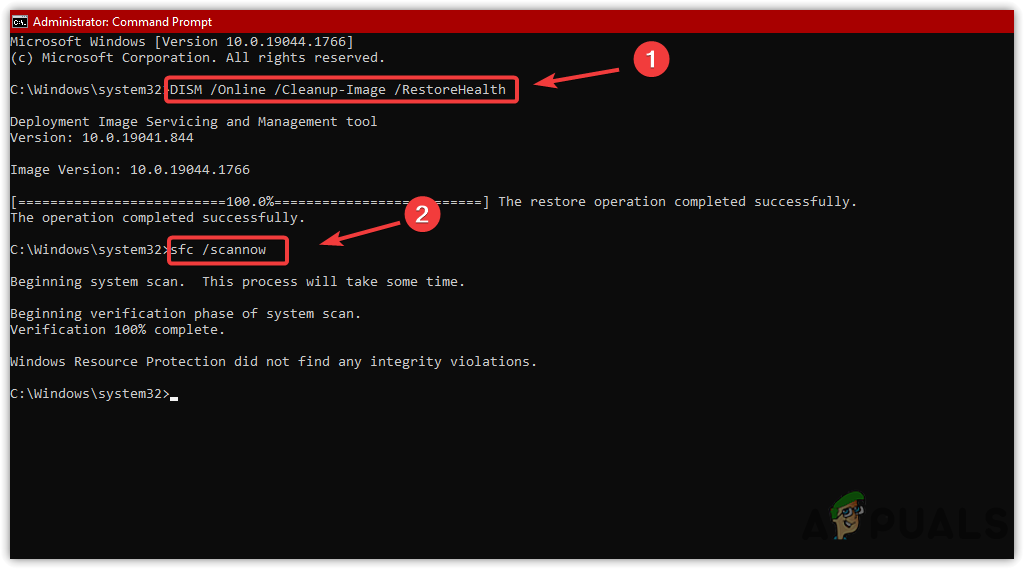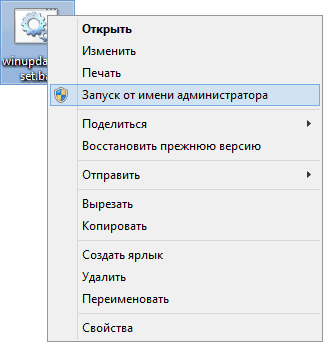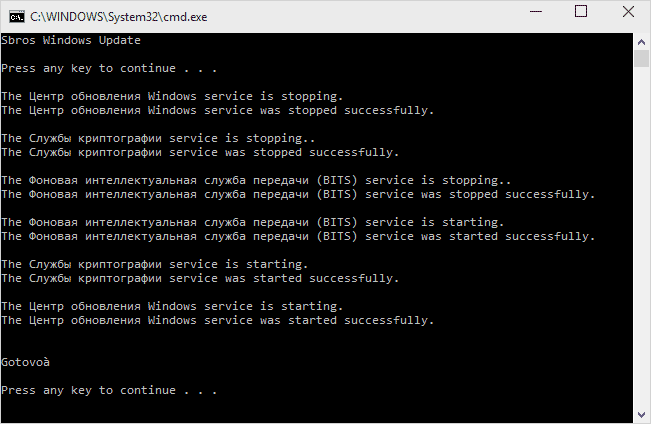Sometimes, some Windows Update fails to download, or just refuse to get installed on your computer even when you try a couple of times. If you face this problem where Windows Updates will not install or download, then this Windows Updates troubleshooting tutorial will help you identify and troubleshoot the problem.
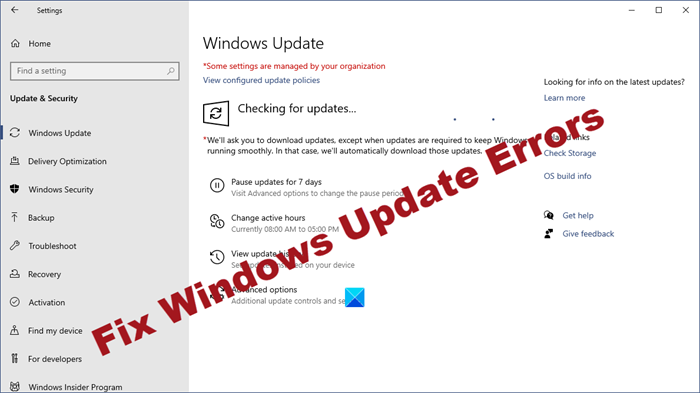
If Windows Update fails to install, is not working, updates will not download or keep failing, on your Windows 11/10/8/7 then these suggestions will help you troubleshoot & fix Windows Updates.
- Try again
- Delete Temporary Files and Browser Cache
- Disable your Firewall and Anti-virus software
- Run SFC and DISM
- Run Windows Update Troubleshooter
- Manually Reset Windows Update Components to default
- Use FixWU
- Flush the SoftwareDistribution Folder
- Reset the Catroot folder
- Check Windows Update Services status
- Check Windows Update log file
- Clear pending.xml file
- Clear the BITS queue
- Delete incorrect Registry values
- Run Windows Module Installer
- Run Background Intelligent Transfer Service Troubleshooter
- Download its stand-alone installer
- Use authenticated Proxy Servers
- Run Windows Update in Clean Boot State
- Take the help of Microsoft Virtual Agent
- Contact Microsoft Support.
Windows Updates troubleshooting tutorial
Let us see all these potential fixes in detail. Do create a system restore point first. Go through the entire post and then see which of these may apply to your system. You may then try any of these, in no particular order.
Fix Windows Update Errors
1] Try again
As mentioned earlier, many times, an update may fail to install in the first instance, but for some inexplicable reason, succeeds in the 2nd or 3rd try. So try a couple of times.
2] Delete Temporary Files and Browser Cache
If you are unable to install Windows Updates, first clear up your Temporary Files and Browser Cache, reboot, and try again. See if this helps resolve the issue. Best and easy to use the built-in Disk Cleanup utility or CCleaner.
3] Disable your Firewall and Anti-virus software
Temporarily Disable your Firewall and Anti-virus software and try again. Here is a list of Windows files and folders you may exclude from Antivirus scans.
4] Run SFC and DISM
Run System File Checker to replace potentially corrupted system files.
You can also fix corrupted Windows Update system files using DISM Tool. The Dism.exe tool can be used in different situations, and one of them is to repair a corrupted Windows Update files. Do note that you need to run a different command if you want to repair corrupted Windows Update System Files. If you run the usual /RestoreHealth command, it may not necessarily help.
DISM will replace potentially corrupted or missing system files with good ones. However, if your Windows Update client is already broken, you will be prompted to use a running Windows installation as the repair source or use a Windows side-by-side folder from a network share, as the source of the files.
You will then be required to run the following command instead:
DISM.exe /Online /Cleanup-Image /RestoreHealth /Source:C:RepairSourceWindows /LimitAccess
Here you have to replace the C:RepairSourceWindows placeholder with the location of your repair source.
Once the process is complete, DISM will create a log file in %windir%/Logs/CBS/CBS.log and capture any issues that the tool finds or fixes.
These can help fix problems that might prevent Windows Updates from installing.
5] Run Windows Update Troubleshooter
Use the Windows Update Troubleshooter from Microsoft. It resets Windows Updates settings to defaults. You may also run the Online Windows Troubleshooter from Microsoft.
6] Manually Reset Windows Update Components to default
Use the Reset Windows Update Agent Tool (Microsoft tool) or the Reset Windows Update Tool (From a 3rd-party) and see if it helps you. This PowerShell script will help you Reset Windows Update Client. See this post if you want to manually reset each Windows Update components to default.
7] Use FixWU
Use our Fix WU tool and see if it helps. It re-registers all the dll, ocx, and ax files required for the proper functioning of Windows Updates.
8] Flush the Software Distribution Folder
Flush the SoftwareDistribution Folder. Run Command Prompt as administrator. In the CMD box that appears on the computer screen, enter the following strings of text, one at a time, and hit Enter.
net stop wuauserv
net stop bits
Now browse to the C:WindowsSoftwareDistribution folder and delete all the files and folders inside.
If the files are in use, restart your device. After rebooting, run the commands above again. Your Windows Store App needs to be closed, by the way, so do not start it.
Now you will be able to delete the files from the mentioned Software Distribution folder. Now in the Command Prompt windows, type the following commands one at a time, and hit Enter:
net start wuauserv
net start bits
Reboot. If you are using Windows Update, try using Microsoft Updates or vice versa.
9] Reset the Catroot folder
Reset the Catroot folder and see. To reset the catroot2 folder do this:
Open an elevated Command Prompt, type the following command one after the other and hit Enter:
net stop cryptsvc
md %systemroot%system32catroot2.old
xcopy %systemroot%system32catroot2 %systemroot%system32catroot2.old /s
Next, delete all the contents of the catroot2 folder.
Having done this, in the CMD windows, type the following and hit Enter:
net start cryptsvc
Your catroot folder will be reset, once you start Windows Update again.
Read: Windows Updates may fail if Fast Startup is enabled.
10] Check Windows Update Services status
Open Windows Services Manager and check the Windows Update related Services like Windows Update, Windows Update Medic, Update Orchestrator Services, etc are not disabled.
The default configuration on a standalone Windows 11/10 PC is as follows:
- Windows Update Service – Manual (Triggered)
- Windows Update Medic Services – Manual
- Cryptographic Services – Automatic
- Background Intelligent Transfer Service – Manual
- DCOM Server Process Launcher – Automatic
- RPC Endpoint Mapper – Automatic
- Windows Installer – Manual.
This will ensure that the required Services are available.
Apart from the direct service, you should find the dependencies of Windows Update service and ensure if they are running or not.
To get started, search for “services” in the Taskbar search box and click on the search result. After opening the Services window, find out Windows Update, DCOM Server Process Launcher, and RPC Endpoint Mapper. Check if they are running or not.
If not, you need to start those services one after one.
11] Check Windows Update log file
If still, you have a problem then, go to C:WindowsWindowsUpdate.log and look for the most recent entry. This will be present towards the end of the log. Any failed updates will have error code/s written next to them. Note them down. If you find just too many entries too confusing delete this WindowsUpdate.log and try installing the problematic updates again.
Now open the newly re-created WindowsUpdate log file and have a look at its contents.
The warnings will probably appear as -: WARNING: Failed to find updates with error code AAAAAAAA.
Now Right-click Computer > Manage > Event Viewer > Applications and Service Logs > Microsoft > Windows > WindowsUpdateClient > Operational . Check out for any Critical Message or Warning.
Next, refer to the Windows Update Error Codes. This will give you the direction in which you may have to look for the solution. You may also search for the Windows Update error code here and see if a specific solution is available.
12] Clear pending.xml file
Open an elevated command prompt window, type the following and hit Enter:
Ren c:windowswinsxspending.xml pending.old
This will rename pending.xml file to pending.old. Now try again.
13] Clear the BITS queue
Clear the BITS queue of any current jobs. To do this, type the following in an elevated CMD and hit Enter:
bitsadmin.exe /reset /allusers
14] Delete incorrect Registry values
Open Registry Editor and navigate to the following key:
HKEY_LOCAL_MACHINECOMPONENTS
Right-click COMPONENTS. Now in the right-pane, delete the following if they exist:
- PendingXmlIdentifier
- NextQueueEntryIndex
- AdvancedInstallersNeedResolving
Restart your computer and try again.
15] Run Windows Module Installer
The Windows Module Installer is a built-in Windows 10 service. It lets you fix the Windows updates which are stuck.
To use this, open a command prompt with admin privileges.
Type the following and hit Enter:
SC config trustedinstaller start=auto
Once successfully executed, you should see [SC] ChangeServiceConfig SUCCESS display within the Command Prompt console.
Exit the command prompt, and check if the buttons are back to normal.
16] Run Background Intelligent Transfer Service Troubleshooter
Run the Background Intelligent Transfer Service Troubleshooter and see if it helps. Background Intelligent Transfer Service or BITS helps in the transfer, download or upload of files between a client and server, and provides progress information related to the transfers. It also plays a role in the download of files from a peer. This Windows Service is essential for Windows Updates to work properly.
17] Download its stand-alone installer
Search on the Microsoft Update Catalog website for the Windows Update patch using the Update KB number, and download its stand-alone installer. Now apply the patch manually. Search for just the number; don’t include KB.
18] Use authenticated Proxy Servers
You can use authenticated Proxy Servers to fix Windows Update and Microsoft Store app Installation errors.
19] Run Windows Update in Clean Boot State
Boot in Clean Boot State and run Windows Update and see if this helps. It works in most cases.
Read: Windows Update keeps disabling itself automatically.
20] Take the help of Microsoft Virtual Agent
If you’re getting an error downloading or installing Windows Updates, you could also take the help of Microsoft Virtual Agent, by clicking here.
22] Windows Update URL List for whitelisting
Make sure that the following URLs related to Microsoft Update are not blocked:
- http://windowsupdate.microsoft.com
- http://*.windowsupdate.microsoft.com
- https://*.windowsupdate.microsoft.com
- http://*.update.microsoft.com
- https://*.update.microsoft.com
- http://*.windowsupdate.com
- http://download.windowsupdate.com
- https://download.microsoft.com
- http://*.download.windowsupdate.com
- http://wustat.windows.com
- http://ntservicepack.microsoft.com
- http://go.microsoft.com
- http://dl.delivery.mp.microsoft.com
- https://dl.delivery.mp.microsoft.com
- https://stats.microsoft.com
21] Contact Microsoft Support
If nothing helps, you can always contact Microsoft Support. They will surely be able to help you.
Posts that help fix related Windows Update problems:
- Windows Update is stuck downloading updates.
- Failure configuring Windows updates. Reverting changes.
- Potential Windows Update Database error detected
- Troubleshoot problems with installing Windows Updates in Windows – FAQ
- Windows keeps installing the same update
- Cannot Update Windows using Windows Update
- Your device is at risk because it’s out of date & missing important security & quality updates
- Some Updates were canceled message
- Service Registration is Missing or Corrupt.
We hope something here has helped you fix your Windows Updates issues.
Windows Update is not working or stuck on Checking for Updates
If Windows Update is not working or stuck on Checking for Updates, you may run the Windows Update Troubleshooter, Re-register these Windows Update related DLL files, or reset Windows Update components.
Support for Windows 8.1 has ended
Support for Windows 8.1 ended on January 10, 2023. We recommend you move to a Windows 11 PC to continue to receive security updates from Microsoft.
Learn more
What does this guided walk-through do?
This guided walk-through provides steps to fix problems with Windows Updates for Windows 8.1 and 7, such as taking a long time to scan, or error codes while installing updates.
For help with Windows Update issues in Windows 10, see Troubleshoot problems updating Windows 10 instead.
A common cause of errors is inadequate drive space. If you need help freeing up drive space, see Tips to free up drive space on your PC.
Common error codes
The steps in this guided walk-through should help with all Windows Update errors and other issues—you don’t need to search for the specific error to solve it. As an example, here are some commonly seen error codes: 0x80240034; 0x8007000E, 0x80242006, 0x80244018, 0x80D02002, 0x80246017, 0x80240438, 0x80070070, 0x8007000D, 0x80246008, 0x80096004, 0x80070020.
The steps provided here should help fix any errors that come up during the Windows Update process.
How does it work?
We’ll begin by asking you questions about the Windows version you’re using and the issue you’re experiencing. Next, we’ll take you through a series of troubleshooting steps that are specific to your situation. At the end of each step, you’ll be asked “Did this resolve the issue?” If it’s resolved, select Yes, and you’re done! If it isn’t resolved, select No and continue with the guided walk-through.
Need more help?
- Remove From My Forums
-
Question
-
Hi. I’m on Windows 10 Pro x64 10240. Windows Update keeps trying to install Win10 10586 and failing with Event ID 31 (below). Can anyone please help ?
I’ve already tried all the usual things over the last few days, like rebuilding my user profile (took ages, complete waste of time), following Microsoft’s recommended procedure for resetting and re-registering MS Update (took ages, complete waste of time),
restarting, turning off various things, switching back from MS Update to Windows Update, changing where I get my updates from (MS servers only), trying under a different user account, etc. No joy.My computer is on a domain and I have local admin privileges.
Log Name: Microsoft-Windows-WindowsUpdateClient/Operational
Source: Microsoft-Windows-WindowsUpdateClient
Date: 18/11/2015 17:11:41
Event ID: 31
Task Category: Windows Update Agent
Level: Error
Keywords: Failure,Download
User: SYSTEM
Computer: Na-0-015-WPA.nrc.ac.uk
Description:
Windows Update failed to download an update.
Event Xml:
<Event xmlns=»http://schemas.microsoft.com/win/2004/08/events/event»>
<System>
<Provider Name=»Microsoft-Windows-WindowsUpdateClient» Guid=»{945A8954-C147-4ACD-923F-40C45405A658}» />
<EventID>31</EventID>
<Version>1</Version>
<Level>2</Level>
<Task>1</Task>
<Opcode>12</Opcode>
<Keywords>0x4000000000000024</Keywords>
<TimeCreated SystemTime=»2015-11-18T17:11:41.890227600Z» />
<EventRecordID>1867</EventRecordID>
<Correlation />
<Execution ProcessID=»592″ ThreadID=»2848″ />
<Channel>Microsoft-Windows-WindowsUpdateClient/Operational</Channel>
<Computer>Na-0-015-WPA.nrc.ac.uk</Computer>
<Security UserID=»S-1-5-18″ />
</System>
<EventData>
<Data Name=»updateTitle»>Upgrade to Windows 10 Pro, version 1511, 10586</Data>
<Data Name=»errorCode»>0x80200013</Data>
<Data Name=»updateGuid»>{BAE0476D-D5E0-45C6-9F59-B87E910A2B4B}</Data>
<Data Name=»updateRevisionNumber»>201</Data>
</EventData>
</Event>
— huddie71 ~~If you~re not seeking help or offering it, you probably shouldn~t be here.~~
Answers
-
Hi,
Let’s see the description of this error code as below:
BITS can request ranges of updates. However, if the network proxy or firewall device does not support range requests, BITS cannot download updates. Therefore, BITS returns the 0x80200013 error code. When this problem occurs, the %windir%Windowsupdate.log
displays the following entry:
Download job failed due to insufficient range support
To resolve this problem, contact the vendor of the network proxy or firewall device.To fix this issue, please first disable your 3rd party security app or firewalls, if there is any proxy settings on your computer, please remove it before install Windows updates.
Hope this could be helpful.
Please remember to mark the replies as answers if they help, and unmark the answers if they provide no help. If you have feedback for TechNet Support, contact tnmff@microsoft.com.
-
Proposed as answer by
Tuesday, December 1, 2015 3:04 AM
-
Marked as answer by
Zen the Ocelot
Friday, December 4, 2015 9:28 PM
-
Proposed as answer by
Windows update failed errors are frustrating for anyone who uses Windows. Whenever you experience Windows update failing repeatedly and see a blue screen with a message indicating problems updating Windows, this article will help guide you through fixing Windows update errors.
Why Windows Updates Fail?
The Windows 10 update failure to install is not uncommon but what causes win 10 update errors? There are several reasons why Windows updates keep failing:
Corrupt Update Files. In this case, try deleting the flawed file and see if that resolves the issue.
Overload in Update Queue. Perhaps, Windows require several updates at a time. Try rebooting the machine to troubleshoot the issue.
Limited Space on Your Drive. The lack of free space on your drive can be a reason why Windows update keeps failing. See if you can free up some space on your drives and try running the Windows update once again.
Conflict with Drives or Hardware. Try disconnecting any connected devices such as drives, USB, or printers that may be causing Windows updates to fail every time.
t
It automatically installs crucial drivers and updates whenever they are available. To keep Windows endpoints up to date, the best practice is to automatically install Windows updates.
How to Fix Update Error
When you wonder how you can install Windows update that keeps failing, there are certain steps you should try to finally update OS on your computer. Give a go the steps described below in the following order until your Windows update error is fixed.
1. Restart the Computer and Run Windows Update Again
Most updates run smoothly, but from time to time, several updates might queue and try to run at the same time, causing Windows update failure. For instance, a servicing stack update has to install first, and then you have to reboot the machine before running the next update installation.
2. Check for Driver or Hardware Conflict
As mentioned earlier, the connected peripheral devices may cause conflicts and be the reason why Windows is unable to update. Disconnect all printers, USBs, webcams, reboot your machine, and then try to run Windows update again.
3. Vacate Space on Your Drive
It is possible that your drive simply lacks free storage space to install the update. See if you can make space by decluttering or using an exernal drive, reboot the machine, and give a Windows update another go.
4. Try the Windows Update Troubleshooter Tool
Windows 10 comes with a designated tool to assist in troubleshooting Microsoft updates issues. Access it easily by simply typing troubleshoot in the taskbar search field. Go to the settings and click Windows Update, then Run the Troubleshooter. Then follow the prompts with instructions.
5. Stop Updates
Step 1 — Go to Settings
Step 2 — Click Update & Security
Step 3 — Click Windows Update
Step 4 — Click Advanced Options button
Step 5 — Switch the Pause Updates toggle off
Step 6 — Restart your computer
Step 7 — Rerun Windows Update
6. Erase Software Distribution Log
Step 1 — Restart computer in safe mode
Step 2 — Open File Explorer, and navigate to C:Windows
Step 3 — Locate and delete the Software Distribution folder
Step 4 — Restart your computer, and run Windows Update
7. Download the Latest Feature Update from Microsoft
When Windows Update keeps failing, you should consider visiting the Microsoft site to download the update file. Once you have downloaded the update, run it manually.
8. Run the System File Checker (SFC) Scan
The System File Checker is a default tool in Windows 10. Also known as “SFC scan,” it’s your fastest method to fix corrupted system files and other problems. Run it to attempt to fix any potential issues with Windows installation.
9. Restore Windows 10 from a Backup
If you are not successful at fixing failed Windows updates, we suggest that you check for a Restore Point on your system. Use it to restore the device to a state when the Windows Update was installed correctly. You can then update the OS to the latest version from that point.
Why Installing Windows Updates?
Microsoft regularly rolls out updates that include bug fixes, feature upgrades, and security patches to improve Windows operating systems usability and security.
Operating system updates patches protect from newly uncovered security vulnerabilities that hackers can exploit. Essentially, by delaying updating your system, you increase the risks of vulnerability exploitation.
Can I Skip Windows Update?
As a standard directive, it is advised to consistently install Windows updates once they become available. However, there are certain exceptions. If you happen to have a problematic update, then you might want to pick between bypassing the update and performing an installation of Windows 10 from scratch.
Consider Action1 RMM for Remote Update Deployment
Give Action1 RMM a try if you need to install Windows updates to remote endpoints. Action1 remote monitoring and management solution is developed to simplify and automate distributions of patches and updates and boost IT management efficiency. Action1 RMM is free to use on up to 100 endpoints and is easy to onboard in minutes.
Have a question in mind why does some of the windows updates just refuse to install? Or sometimes when you open windows update history you might notice it shows some windows updates failed to install with different errors such as 0x800f080a, or 0x800f0904. If you are experiencing a similar problem Windows Update Won’t Install Updates or windows 10 update failed to install or stuck downloading you are right on track. In this post, we discuss some of the unique solutions you can apply to make Windows install updates again.
Recently Microsoft has released Windows update KB5022282 for devices running the latest Windows 10 version 22H2. Installing KB5022282 bumps OS to Windows 10 Build 19045.2486 that focuses on security and non-security fixes. But several windows users report windows 10 update KB5022282 fail to install with different errors 0x800f0922, 0x8000ffff, 0x800f0826.
Many users describe the problem on Microsoft’s forum
There were problems installing some updates, but we’ll try again later. If you keep seeing this and want to search the web or contact support for information, this may help:
2023-01 Cumulative Update for Windows 10 Version 22H2 for x64-based Systems (KB5022282) – Error 0x800f0831, 0x800f0900 or 0x80070005″
Why does Windows update fail to install?
There are many possible things that can cause Windows Update to fail over and over. Slow internet, lack of disk space, corruption on system files, update service not started or security software or VPN are some common.
Free up some disk space on the system drive, disabling the firewall or antivirus, running the windows update troubleshooter or resetting windows update components helps fix most of the windows update problems on windows 10.
How to fix windows update problems?
The first thing we recommend is to reboot your PC, check for and try to install the windows update again. When you reboot your PC, not only refresh the operating system but also clears temporary glitches present there that prevent windows updates download or apply.
Open the command prompt as administrator and run this command SC config trustedinstaller start=auto Now try to install the windows update again.
Check internet connection
The next thing you need to check your internet connection. Yes, make sure you have a stable internet connection to download windows update files from the Microsoft server.
- You can check your internet speed at fast.com or speedtest.net.
- Press Windows key + R, type ping google.com -t, and click ok to check if continuously getting ping replay from the Google server.
If ping replay breaks you need to troubleshoot the internet connection before download or installing windows updates.
In addition, disconnect the VPN if configured on your device and temporarily disable security software before trying to install windows updates.
Free up some disk space
Next, you need to check and make sure you have enough free space on the system drive to download and apply the latest windows updates. It’s important especially if you have SSD drive installed.
- Press the windows key + E to open files explorer then click on This PC,
- Look at the system drive (usually C) minimum of 10 GB of free space there. If not you need to free up some disk space.
- To Free up disk space on your system drive, you can move some download files to an external drive.
- You can also reclaim a lot of storage by uninstalling apps and Games you rarely use.
- In addition run Disk clean up or read how to delete temporary files automatically on windows 10.
Pro tip – Disconnect nonessential devices such as USB flash drives or external HDDs, headphones or printers before checking for windows updates.
Try to install the windows update again
As per Microsoft experts, the most common cause of windows Update failed messages is that there are two updates waiting. If one is a servicing stack update, it has to install first, and the machine has to restart before it can install the next update. Restart windows and try running Windows Update again, yes this is very effective for most users.
- Press the Windows key + X and select settings,
- Click on Update & security the hit check for updates button,
- Also, make sure to click on the download and install link under optional updates (If available)
- This will start the download and install windows updates from the Microsoft server,
- You only need to restart your PC to apply windows updates.
Start windows Clean boot State
Clean booting your computer may also help. If any third-party software causes conflict to download & install windows updates. Here’s how to do this:
- Go to the search box > type msconfig
- Select System Configuration > go to the Services tab
- Select Hide all Microsoft services > Disable all
Go to the Startup tab > Open Task Manager > Disable all the unnecessary services running there. Restart your computer and check for updates.
Try Windows Update Troubleshooter
Run the built-in Windows Update Troubleshooter that attempts to identify and fix any problems that exist which might prevent windows 10 from downloading and installing the latest Windows Updates.
The process will automatically scan for and detect problems within your system, which can take a few minutes to complete.
To run the update troubleshooter
- Press Windows key + x and select settings,
- Go to Update & Security then Troubleshoot, Click on the additional troubleshooter link.
- Locate Windows Update select it and then click on Run the troubleshooter.
- The diagnosis process checks the status of Windows Update and its related Services, repair, and resets Windows Update components.
- In Addition, the troubleshooter clears the Windows Update related temporary files, checks for pending updates, and more.
- Once the troubleshooting completes restart your computer and check for windows updates again.
Reset Windows Update
If the problem continues after running the troubleshooter, the windows update stuck download 100 or fails to install then reset windows update components following the steps below.
Open Command Prompt as administrator, enter the following commands and hit Enter after each one:
- net stop wuauserv
- net stop cryptSvc
- net stop bits
- net stop msiserver
- Ren C:WindowsSoftwareDistribution SoftwareDistribution.old
- net start wuauserv
- net start cryptSvc
- net start bits
- net start msiserver
These commands will first Stop windows update service and its related services. Then rename the SoftwareDistribution folder to SoftwareDistribution.old (Where windows store update files, If any files in this folder get corrupted this may cause windows updates fails to install. ) After that restart the windows update and its related services.
If you are not comfortable with a command prompt then
- Open the windows services console using services.msc
- Stop windows update service and its related services (BITS)
- Now open file explorer using windows key + E and Go to the following location. C:WindowsSoftwareDistributionDownload
- Now delete everything in the folder, but do not delete the folder itself.
- To do so, press CTRL + A to select everything and then press Delete to remove the files.
Or rename the Software Distribution folder (C:Windows) After that restart the services you previously stopped. and check for windows updates again.
Switch google DNS
If you notice Windows updates won’t download or are stuck downloading updates then change your DNS address following the steps below. Several users recommended this as a working solution when windows updates are stuck downloading.
- Press Windows key + R, type ncpa.cpl and click ok,
- This will open the network connections window,
- Locate your active network adapter, right-click and select properties,
- Double-click on Internet protocol version 4 (TCP/IPv4) to open its properties,
- Select the radio button, use the following DNS server address then set preferred DNS server 8.8.8.8 and Alternate DNS server 8.8.4.4.
- Checkmark on validate settings upon exit, click ok, apply and ok
Now try to install windows updates again and check its status.
Repair Corrupted Windows System Files
Corrupted system files might prevent new windows updates to apply and result windows updates fail or stuck install. Run DISM (Deployment Image Servicing and Management) and sfc (System file checker) utility helps detect and repair missing system files automatically.
- Open the command prompt as administrator,
- First, run DISM command DISM.exe /Online /Cleanup-image /Restorehealth
- Once the command is executed run sfc /scannow command
- Both commands check system image health and check for corruption in system files if found it will restore them with the correct one.
- Let the scanning process complete 100%, Once done restart your PC and try to install the windows update again.
Update Windows 10 Offline
Also, you can resolve windows update installation problems by manually installing the latest Windows 10 updates.
- Visit the Windows 10 update history webpage where you can notice the logs of all the previous Windows updates that have been released.
- For the most recently released update, note down the KB number.
- Now use the Windows Update Catalog Website to search for the update specified by the KB number you noted down. (for example KB5022282) Download the update depending on if your machine is 32-bit = x86 or 64-bit=x64.
- Open the downloaded file in order to install the update.
That’s all after installing the updates simply restart the computer to apply the changes. Also If you are getting Windows Update stuck while upgrading the process simply use the official media creation tool to upgrade to Windows 10 version 22H2 without any error or problem.
Did these solutions help to fix “Windows 10 update error 0x800f0900“? Let us know in the comments below. Also, read
- Windows 11 upgrade or installation failed? 9 Things to Try
- Solved: Windows 10 black screen with cursor after sleep
- Solved: An operating system wasn’t found on Windows 10/8.1/7
- Solved: Windows 10 start menu search not working after update
- Windows 11 Photos App not opening or Not working? Try these solutions
Microsoft releases tons of cumulative updates for Windows 10 and 11 every month. Usually, the updates are downloaded and installed directly via Windows update, but sometimes, you may get stuck with different errors that occur while updating. If there are uncountable Windows Update errors, there are also some solutions that have been approved by the affected users that we mentioned below.
Before moving out to the solutions, we want you to know why Windows updates error occurs. One of the following causes might be the culprit of your error.
- Incorrect or corrupted Registry- If a corrupted or incorrect modified value is set to wuauserv, you will experience errors while updating Windows, as it is responsible for downloading, detecting, and installing Windows updates.
- Windows Update Service is not working- Another leading cause that can prevent the installation is the stopped Windows updates service. If it gets disabled or stopped, you may not be able to update Windows.
- Corrupted Software Distribution Folder- if the content under the software distribution folder gets corrupted, the errors will appear as the folder stores the temporary updates files for the Windows to install updates.
- Corrupt System Files- The corrupted system files are also one of the main reasons, as they play an important role in updating Windows. Therefore, make sure you do not have any corrupted system files. If there is, you can follow the below step to repair the files.
1. Restart Windows Update Service
Before going further, you should restart the Windows Update service, as it is responsible for updating the Windows when updates are available or downloaded. Therefore, make sure to check if it is running properly. Below are the steps:-
- Press Windows + R to open Run Window
- Type services.msc and click OK
Opening Services Window - Type W on the keyboard to scroll down to Windows update service
- Right the Windows Update Service and click Properties
Navigating to Service Properties - Select Automatic from the startup type menu
- Click Apply, then click Start if the service gets stopped
Restarting Windows Update Service - Then click OK and check if the error gets resolved.
2. Reset Windows Update Registry Keys
There may likely be a chance of corrupted or irrelevant modified registry keys. Therefore, you need to reset the Windows update registry keys to reset all the values to their default.
- Download the registry file from here to reset the Windows update registry values
- Right-click on it, then click Run
Running Windows Registry File - Click Yes if asked for the confirmation
- Once done, check if the error is fixed.
3. Turn OFF Metered Connection
Metered Connection feature is for those who have a network with a data limit or who want to prevent background downloads. So if the metered connection is turned on, you may not be able to download Windows updates unless you disable the metered connection. Below are the steps:-
- Right-click Start Menu and select Settings
- Go to Network & Internet and select the Ethernet or WIFI from the left pane
Navigating to Network Properties - Scroll down a little bit and turn off the Metered Connection if enabled
Turning Off Metered Connection - Once done, check if the issue persists.
4. Clear And Rename Software Distribution Folder
The software Distribution folder contains Windows updates files that Windows requires to install updates. If the content under software distribution gets corrupted, you won’t be able to install Windows updates.
Renaming the software distribution helps to fix issues that occur while updating. First, you will need to stop the Windows update services to rename or clear the software distribution folder. Below are the steps:-
- Click Start Menu and type command prompt
- Right-click the terminal and Choose Run As Administrator
- Now copy the following commands and paste them onto the terminal
net stop wuauserv net stop bits
Stopping Windows Update Services - Hit Enter, then minimize the terminal
- Press the Windows + R and paste the following directory into the box
C:WindowsSoftwareDistribution
Navigating Software Distribution Folder - Hit enter to navigate, then delete all the files
Deleting Software Distribution Files - Once done, maximize the terminal and paste the following commands over there
rename c:windowsSoftwareDistribution SoftwareDistribution.bak
- Now start the services by pasting the below commands
net start wuauserv net start bits
- Once done, try updating Windows and check if the error is fixed.
5. Clear Temporary Files
Getting errors while updating Windows can be the result of the lack of space in the drive. Usually, Windows requires a decent amount of storage to install Windows updates on a drive. Therefore, if you don’t have space in the drive, either create a new disk and transfer all the data as a backup, then delete the volume from the disk once you transfer data, then extend the volume of a disk where the Windows is installed, or you can also delete some data from the drive to make space for the upcoming updates. Follow the steps:-
- Open the File Explorer by pressing Win + E on the keyboard
- Click This PC from left and right-click the drive where Windows has installed
- Go to Properties, then click Disk Cleanup
Click Disk Cleanup - Tick all the files and under files to delete
Removing Temporary Files - Then, click OK and click Delete Files
- Once done, check if the error gets fixed.
6. Perform a DISM and SFC Commands
DISM stands for Deployment Image Servicing and Management, a command line utility executes to repair Windows images. While SFC stands for System File Checker, a command link utility allows the users to repair system files. If the error occurs due to corrupted files, these commands can resolve this issue. Below are the steps:-
- Press the Windows key and type the command prompt
- Open it as administrator, then paste the following commands
DISM /Online /Cleanup-Image /RestoreHealth sfc /scannow
Repairing System Files - Once the verification is done, close the terminal and check if the error persists.
7. Download Windows Updates Via Update Assistant
Update assistant can be used to upgrade Windows to the latest. If the error is not fixed after applying all the methods, updating Windows via Update assistant might help:-
- Download the Windows Update Assistant and run it
- Click on Update Now and wait for updates to download
Upgrading Windows - Once it finishes, it will automatically upgrade your Windows OS.
8. Download Windows Updates Via Microsoft Catalog
You can also use the Microsoft catalog website to download Windows updates if you know the Windows update name. You will find every update that Microsoft has released yet on the catalog. Follow the steps:-
- Visit Microsoft Catalog and search for the update by its name
- Now click the Download button on the update
Click to Download the Windows update - This will give you the download link, click on it and download it
- Once done, run the update file to upgrade your Windows.
Kamil Anwar
Kamil is a certified MCITP, CCNA (W), CCNA (S) and a former British Computer Society Member with over 9 years of experience Configuring, Deploying and Managing Switches, Firewalls and Domain Controllers also an old-school still active on FreeNode.

С помощью описанных ниже методов можно исправить большинство ошибок, когда обновления в Центре обновлений не скачиваются или сообщается, что произошли ошибки при установке обновления. Дополнительную информацию по возможным решениям можно найти в конце руководства.
Использование средства устранения неполадок обновлений в Windows 11 и Windows 10
В Windows предусмотрено встроенное средство устранения неполадок при установке обновлений, это же средство можно скачать и с официального сайта Майкрософт.
При возникновении проблем с обновлениями рекомендую начать именно с этого варианта: он не самый результативный, но самый простой и безопасный:
- В Windows 11 зайдите в Параметры — Система — Устранение неполадок — Другие средства устранения неполадок — Центр обновления Windows и нажмите кнопку «Запуск».
- В Windows 10 средство устранения неполадок находится в Параметры — Обновление и безопасность — Устранение неполадок — Дополнительные средства устранения неполадок — Центр обновления Windows.
- Если доступа к Параметрам нет, вы можете скачать средство устранения неполадок обновлений Windows с официального сайта https://aka.ms/wudiag и запустить файл.
При использовании инструмента «Диагностики и предотвращения неполадок на компьютере» будет автоматически выполнен поиск возможных проблем со службами, отвечающих за установку обновлений и сброс некоторых параметров Центра обновлений.
После выполнения проверки и устранения неполадок можно попробовать установить обновления снова.
Очистка кэша обновлений Windows вручную
Этот способ срабатывает для большого количества ошибок при скачивании и установке обновлений в Windows 11, Windows 10 и Windows 8.1. Порядок действий следующий:
- Запустите командную строку от имени администратора. Для этого можно использовать поиск на панели задач: начните вводить «Командная строка», нажмите правой кнопкой мыши по результату и выберите пункт «Запуск от имени администратора».
- По порядку введите следующие команды, нажимая Enter после каждой:
net stop cryptSvc net stop bits net stop msiserver ren C:WindowsSystem32catroot2 catroot2.old ren C:WindowsSoftwareDistribution SoftwareDistribution.old net start wuauserv net start cryptSvc net start bits net start msiserver
- Закройте командную строку и попробуйте повторить поиск, скачивание и установку обновлений через Центр обновлений.
Утилита Reset Windows Update Tool
Ранее на сайте Microsoft TechNet была доступна специальная утилита для полного сброса параметров центра обновлений Windows 10, 8.1 и Windows 7 — Reset Windows Update Tool, выполняющая полный набор действий, каждое из которых направлено на исправление различных моментов, способных мешать скачиванию и установке обновлений через Центр обновлений. Сейчас официальный сайт инструмента изменился, но эффективность — нет.Перед использованием утилиты рекомендую создать точку восстановления системы. Следующие шаги будут выглядеть следующим образом:
- Скачайте Reset Windows Update Tool в нужной разрядности с сайта https://wureset.com/downloads.php.
- После установки, запустите Reset Windows Update Tool от имени администратора (правый клик — запуск от имени администратора) и выберите нужный язык, русский в наличии, но в моем случае отображается в неправильной кодировке, поэтому далее показаны действия на английском языке.
- Вам будет предложено согласиться с тем, что гарантий исправной работы утилиты не дается и ввести «Y», если вы согласны.
- Вы увидите меню, в котором можно выбрать, какие действия следует выполнить для исправления работы центра обновлений. Рекомендую следующий порядок: 2, 3, 6, 11, 12, 13 с последующей перезагрузкой компьютера.
Полный список доступных опций в утилите текущей версии:
- Открыть параметры защиты системы.
- Сброс компонентов Центра обновлений Windows.
- Удаление временных файлов.
- Открыть параметры Internet Explorer.
- Запуск chkdsk на системном разделе (проверка диска на ошибки).
- Запуск проверки целостности системных файлов.
- Проверка целостности хранилища компонентов.
- Проверка образа на наличие отметки «поврежденный».
- Автоматическое восстановление хранилища компонентов с помощью dism.exe
- Очистка устаревших компонентов.
- Удаление записей реестра с ошибками.
- Сброс и исправление параметров Winsock.
- Принудительное обновление локальных групповых политик.
- Запуск поиска обновлений Windows.
- Поиск ключа продукта Windows.
- Поиск других локальных исправлений (открывает устранение неполадок Windows).
- Поиск дополнительных способов исправления онлайн (открывает справку на сайте Майкрософт в браузере).
- Перезапуск ПК.
Подробно об использовании утилиты в отдельной статье: Как исправить ошибки обновлений с помощью Reset Windows Update Tool.
Сброс центра обновлений Windows для исправления ошибок с помощью bat-файла
Для того, чтобы исправить многие ошибки при установке и загрузке обновлений Windows 10, 8.1 и Windows 7, бывает достаточно полностью сбросить параметры центра обновлений. Я покажу, как сделать это автоматически. В дополнение к сбросу, предложенный скрипт запустит необходимую службу, если вы получаете сообщение о том, что Центр обновления не запущен.
Кратко о том, что происходит при выполнении нижеследующих команд:
- Останавливаются службы: Центр обновления Windows, Фоновая интеллектуальная служба передачи BITS, Службы криптографии.
- Служебные папки центра обновления catroot2, SoftwareDistribution, downloader переименовываются в catroot2.old и т.д. (которые, если что-то пошло не так, можно использовать как резервные копии).
- Все ранее остановленные службы снова запускаются.
Для того, чтобы использовать скрипт, откройте блокнот Windows и скопируйте в него команды, представленные ниже. После этого сохраните файл с расширением .bat — это и будет сценарий для остановки, сброса и перезапуска Центра обновлений Windows (подробнее: Как создать BAT-файл).
@ECHO OFF echo Sbros Windows Update echo. PAUSE echo. attrib -h -r -s %windir%system32catroot2 attrib -h -r -s %windir%system32catroot2*.* net stop wuauserv net stop CryptSvc net stop BITS ren %windir%system32catroot2 catroot2.old ren %windir%SoftwareDistribution SoftwareDistribution.old ren "%ALLUSERSPROFILE%application dataMicrosoftNetworkdownloader" downloader.old net Start BITS net start CryptSvc net start wuauserv echo. echo Gotovo echo. PAUSE
После того, как файл создан, кликните по нему правой кнопкой мыши и выберите пункт «Запуск от имени администратора», вам будет предложено нажать любую клавишу для начала, после чего по порядку будут выполнены все необходимые действия (еще раз нажимаем любую клавишу и закрываем командную строку).
И, наконец, обязательно перезагрузите компьютер. Сразу после перезагрузки снова зайдите в Центр обновления и посмотрите, исчезли ли ошибки при поиске, скачивании и установке обновлений Windows.
На сайте Майкрософт также приводятся шаги для выполнения всех необходимых действий по сбросу вручную: Сброс центра обновлений Windows вручную.
Скачивание и установка обновлений вручную
Если ошибки возникают при установке какого-то одного обновления, вы можете попробовать вручную скачать его из каталога центра обновления Майкрософт:
- Перейдите на страницу https://www.catalog.update.microsoft.com/Home.aspx
- В поле поиска на странице введите номер обновления, отображаемый в центре обновлений в формате: KB1234567
- Посмотрите, есть ли в результатах поиска доступное для загрузки обновление с этим номером для вашей версии операционной системы. При наличии — скачайте и установите его.
Быстрая переустановка системы с исправлением системных файлов и параметров, но без удаления программ и данных
Если простые способы не помогают, вы можете выполнить быструю переустановку системы с исправлением всех системных файлов и параметров, при этом все ваши программы и данные останутся на месте. Способ подходит для Windows 11 и Windows 10:
- Если у вас имеется ISO-файл с образом текущей ОС, просто смонтируйте его в системе и запустите файл setup.exe, а затем пройдите все этапы установки.
- Если файла образа нет, то для Windows 11 — скачайте оригинальный ISO Windows 11, смонтируйте в системе и запустите файл setup.exe с него. Для Windows 10 — зайдите на страницу https://www.microsoft.com/ru-ru/software-download/windows10 и нажмите кнопку «Скачать средство сейчас». Запустите скачанную программу и на экране «Что вы хотите сделать?» нажмите «Обновить этот компьютер сейчас», далее пройдите все необходимые шаги для установки системы.
К сожалению, не все возможные ошибки обновления Windows можно решить вышеописанным способом (хотя и многие). Если способ вам не помог, то обратите внимание на следующие возможные варианты:
- Попробуйте использовать сторонние программы управления обновлениями Windows для их загрузки и установки.
- Если ранее для отключения обновлений вы использовали какую-то стороннюю программу, попробуйте с помощью неё же вновь включить их.
- Если вы использовали какие-то утилиты для отключения слежки Windows 10, они могли заблокировать доступ к серверам Майкрософт, например, в файле hosts и брандмауэре.
- При наличии сторонних антивирусов на компьютере, попробуйте отключить антивирус и проверить, решило ли это проблему.
- Попробуйте установить DNS 8.8.8.8 и 8.8.4.4 в параметры Интернет-соединения. О том как это сделать: Как изменить адрес DNS-сервера в Windows.
- Отсутствие свободного места (или малое его количество) на системном разделе жесткого диска или SSD также может приводить к ошибкам при скачивании и установке обновлений. Здесь может быть полезным: Как очистить диск C от ненужных файлов.
- Проверьте, запущены ли все необходимые службы (их список приводился ранее).
- Выполните поиск в Интернете по сообщаемому коду ошибки, чтобы узнать о возможных причинах появления ошибки.
- Выполните проверку и восстановление целостности системных файлов Windows. Подробные инструкции: для Windows 11 и для Windows 10.
- Использование VPN или прокси также может влиять на возможность скачивания и установки обновлений.
- Попробуйте выполнить чистую загрузку Windows. Если при чистой загрузке ошибки пропадают, можно сделать вывод, что ошибки вызваны каким-либо сторонним ПО на компьютере.
На самом деле, разных причин, по которым не ищутся, не загружаются и не устанавливаются обновления, может быть множество, но, по моему опыту, представленная информация сможет помочь в большинстве случаев.

